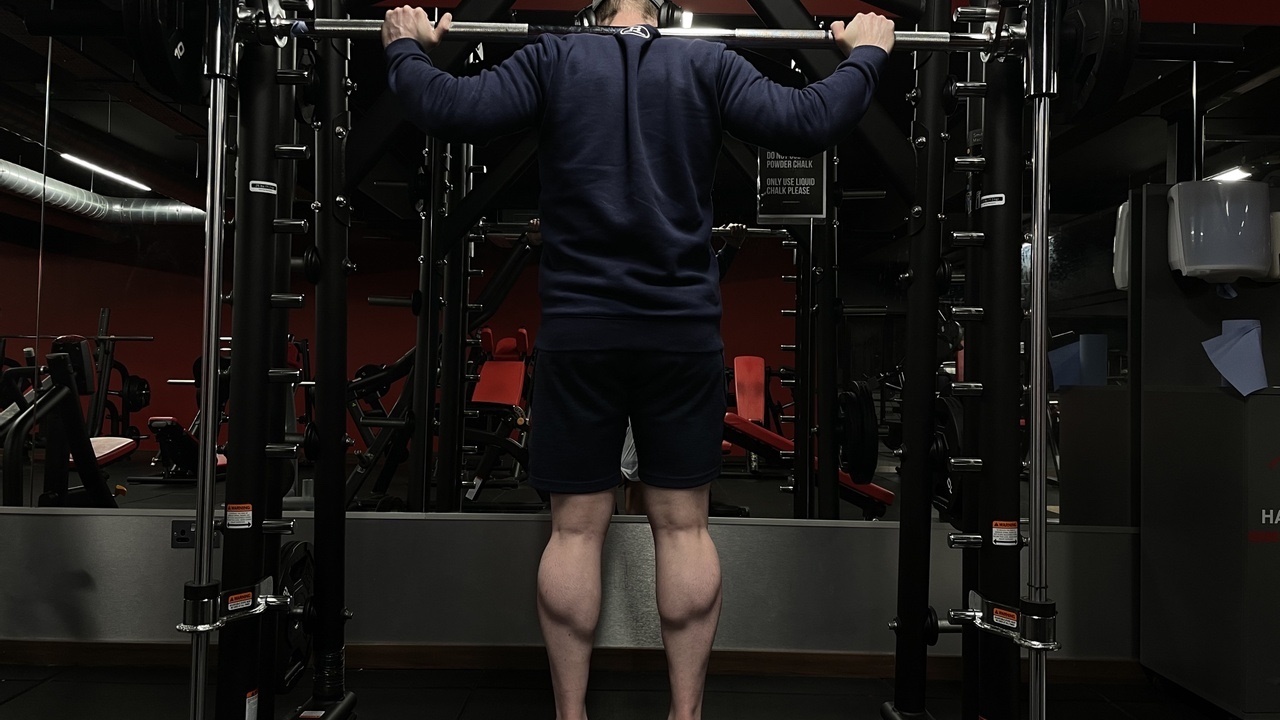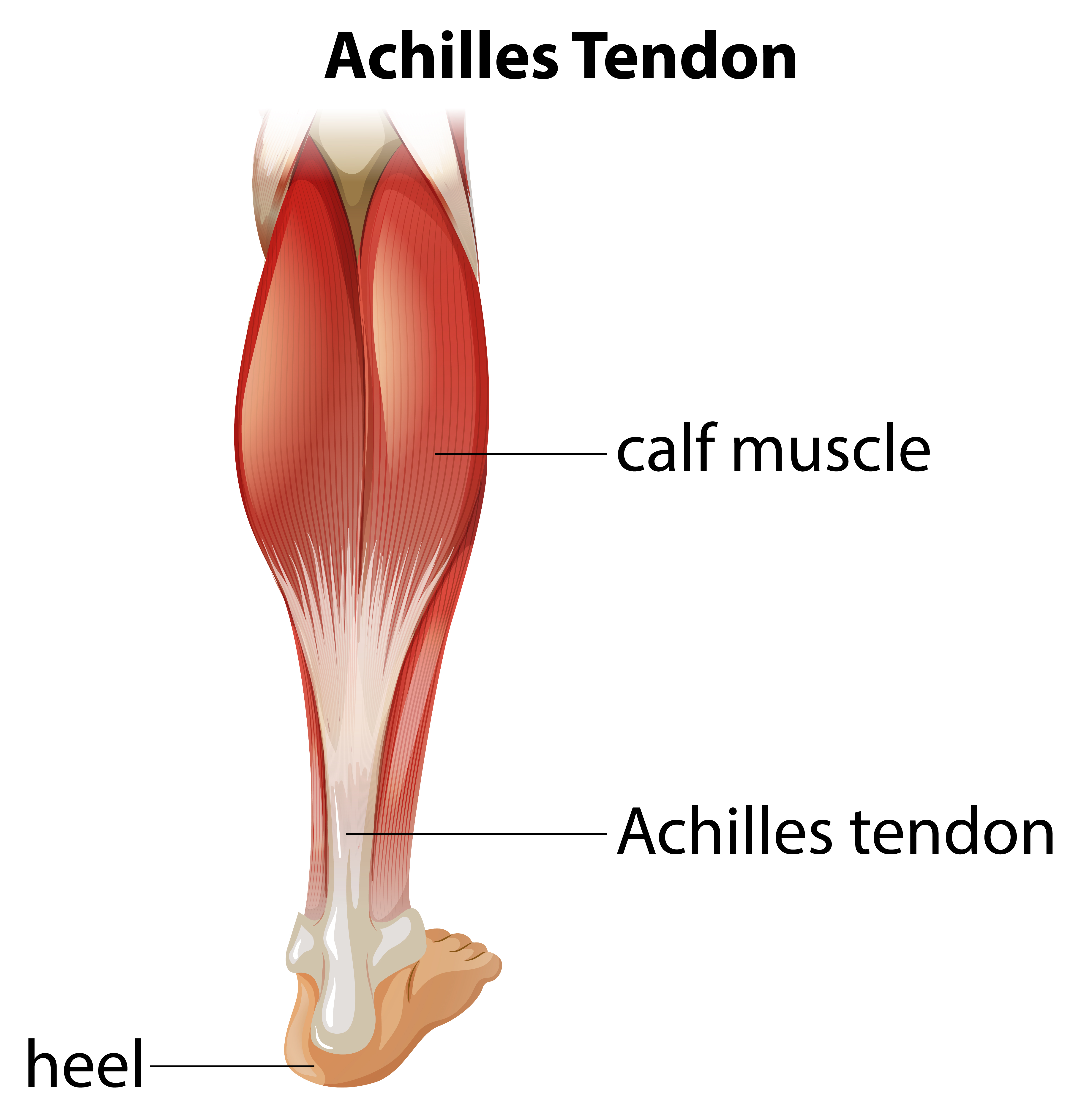How to get bigger calves
Jul 05, 2021
Let’s face it:
We all want to have well-developed calf muscles because, while small, these muscles can set us apart and contribute significantly to our overall physique.
So, if you’re like most lifters interested in fitness, you’ve probably asked yourself this question:
“How to get bigger calves?”
It seems that no matter how much we train them and what exercises we do, our calves are resistant to growth.
But is that truly the case, or are we following ineffective tactics? Today, we’ll go over everything you need to know.
Calf Muscles Anatomy and Function
Our calves are located on the lower body and made up of two different muscles: the gastrocnemius and soleus. The gastrocnemius is the two-headed outer and more visible muscle, while the soleus is a deep muscle that lies underneath.
Both heads of the gastrocnemius originate from the femoral bone and insert into the heel bone via the Achilles tendon. Because the gastrocnemius crosses the knee joint, it contributes to knee flexion.
The soleus originates from the tibia and fibula bones, which means that it doesn’t contribute to knee movement. It also inserts into the heel bone via the Achilles.

Aside from that, the soleus and gastrocnemius produce plantar flexion, much like we see during a calf raise exercise. The soleus is the primary producer of plantar flexion from a bent-knee position, such as a seated calf raise.
The Overlooked Factors For Effective Calf Training
The most important, yet, ironically, most overlooked factors in effective calf training is using a full range of motion and appropriate tempo.
Walk into any gym today, and you’re bound to see countless people who do fast, half-reps on their calf raises and wonder why they can’t seem to develop these muscles.
The fact is, using your full range of motion on each repetition is much more beneficial than lifting more weight with poor form. Don’t forget - if you’re interested in muscle growth, your aim is to train the muscle, not move the weight.
When we consider range of motion, I use the word “your” intentionally here. We should respect our active range of motion when it comes to exercise execution, as we all have different anatomical variation and joint structure. As a general rule of thumb, assess your active range of motion by taking your ankle through plantar flexion and dorsiflexion, without weight, and you’ll see what range your nervous system has active control over.
Secondly, tempo is a major consideration for calf training. As mentioned, the calf muscles insert into heel bone via the Achilles tendon. And with such a large tendon, fast reps lend themselves to increased use of the strength shortening cycle (SSC). The SSC is something that occurs between the eccentric and concentric portion of the lift (within the amortization phase).
Think of the SSC like an elastic band. Once the band (or muscle) is stretched, there is a build up of elastic energy. In the muscle, this elastic energy is stored temporarily in the tendon and can recoil through the concentric portion of the lift. While this might be useful for athletes (think about jumping etc), we must also appreciate that increased reliance on the SSC means there is less active contribution of muscle fibres in force production. Ultimately, this means a dampened hypertrophy stimulus.
To reduce the reliance on the SSC, we should pause at the bottom. This allows the stored elastic energy to dissipate as heat. Thus, the force production for the concentric portion must come from active elements of muscle fibres (i.e. actin and myosin cross-bridging). For this reason, I typically assign tempo’s for any calf exercise. Something like 3201 would make sense.
How Much Training Volume Do Our Calves Need?
Like every muscle, we must actually apply mechanical tension through strength training to elicit a hypertrophy stimulus and build muscle. And this means doing sufficient volume. But, unlike many other muscle groups, our calves tend to do a lot of work every day. They are involved in all sorts of activities, including walking, climbing stairs, running, jumping, and standing upright.
Our calves are also smaller (usually slower twitch) muscles, which means that they are more resistant to growth, but tend to recover faster between workouts.
Given these two factors, a higher-volume, high-frequency approach to calf training would probably work great for most people.
Based on that, if you’re looking to bring up your calves, some training recommendations are:
- Train your calves 2 - 3 times per week since they tend to recover faster.
- Use various loads and repetition ranges to cause different types of hypertrophy-related stress (e.g., metabolic stress and mechanical tension).
- Ensure your training intensity is sufficient - 0-2 RIR could be considered to ensure full motor unit recruitment and mechanical tension. Volume and intensity should be adjusted depending on how you recover though.
- Perform different calf exercises – as we discussed, the soleus is the primary mover in seated calf exercises, but standing calf work is also crucial for adequate gastroc loading and growth.
- Use an appropriate tempo to mitigate the SSC - something like 3201 can work well.
- Train your calves earlier in the session, if possible. If you’re serious about progressing them, don’t leave them as an afterthought in the session, where fatigue is higher.
The Best Calf-Building Exercises
To make things even more practical, here’s some exercises you can try out:
- Standing calf raises (machine)
- Alternatives - Smith machine, Leg press machine calf raises, Unilateral standing dumbbell calf raises, Donkey calf raises
- Seated calf raises (machine)
- Alternatives - Seated dumbbell calf raises, Bent knee leg press calf raises, soleus wall sit (isometric)
A Sample Calf-Building Routine
And piecing these exercises into a program, might look something like this:
Workout 1 (e.g., Monday)
- Standing machine calf raises – 3 sets of 8 - 10 reps, Tempo - 3201, 1-2 RIR
- Single leg (Unilateral) seated dumbbell calf raises – 2 sets of 10 - 15 reps, Tempo 3201, 0 RIR
Workout 2 (e.g., Wednesday)
- Seated machine calf raises – 3 sets of 15 - 20 reps, Tempo 3201, 1-2 RIR
- Smith machine calf raises – 2 sets of 6 - 10 reps, Tempo 3201, 0 RIR
Workout 3 (e.g., Friday)
- Soleus wall sit - 2 sets of 60 - 90 seconds
- Donkey calf raises (on a machine) – 3 sets of 10-15 to reps, Tempo 3201, 0 RIR
Any Questions?
Feel free to reach out to at any time if you need help!
Email: [email protected]
Looking To Drop Fat And Fuel Your Workouts? 👇
Get my FREE 7 day 2200 Calorie High-protein Fat Loss Meal Plans, built to keep you full, fuel your workouts, and help you lose fat without giving up your favourite foods.
Enter your details to grab your free copy now!
No spam here. Only quality tips and updates that help you 🤝

